“What makes a class honors?”
We get that question a lot. And the answer is … it depends. In an engineering course, “honors” may be your entrée to working with the molecular beam epitaxy machine, which allows you to grow nanostructures one atom at a time. In an honors section of a history course, you might do additional readings and conduct primary research in the UA Libraries’ Special Collections.
In the honors section of Carl Smith’s American Landscapes course (LARC 1003H), honors students Morgan Palmer and Polina Timchenko gave up a couple of Saturdays last spring for personal tours of some quintessentially American landscapes located right here in Arkansas. The tours were led by a team of experts, starting with Carl Smith himself. An associate professor of landscape architecture, Smith was born and bred in Yorkshire, England, and brings a fresh perspective and a passion for sustainable development to the 21st-century American landscape.
His course surveys mankind’s changing attitudes toward urban and rural outdoor spaces and the origins of the environmental movement. Northwest Arkansas, he says, provides the perfect setting to focus on issues of national importance: “It is one of the fastest growing regions in the U.S.A., and will be facing some challenging questions concerning the accommodation of population growth and urbanization.” At the same time, the region “benefits from a varied, beautiful natural landscape, and cultural capital of national significance.”
Join us for the first of two road trips offering a fresh take on our own landscape.
Landscape into Art into Landscape: Crystal Bridges Museum of American Art
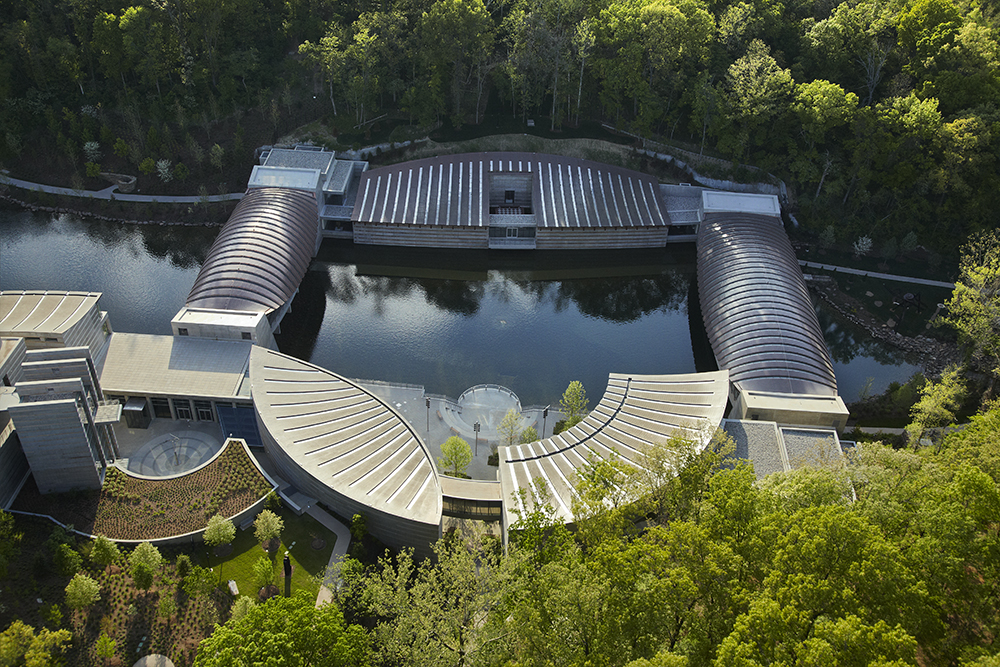
1. At Crystal Bridges, you experience landscape both indoors and out. The museum is nestled into a ravine, poised above two spring-fed ponds and surrounded by a luxuriant landscape that rivals the painted landscapes within. Photo by Tim Hursley, courtesy Crystal Bridges Museum of American Art.

2. The indoor tour, led by Museum Educator Matt Boyd, begins with a close examination of one of the museum’s signature paintings, a stand out in a strong collection of 19th-century American landscapes: Kindred Spirits, painted in 1849 by Asher Durand. “This work is unusual, in that the people are more prominent than usual,” Boyd points out. Central to the composition is painter Thomas Cole, leader of the Hudson River school of painters and an early advocate for conservation of the American landscape. Polina Timchenko, a second-year honors architecture student from Ukraine, sketches.

3. No humans in this glorious Autumn Landscape (ca. 1865) by Thomas Moran, but Addison Warren (in Razorback jacket), an honors landscape architecture student who is a teaching assistant for the course, notices something manmade in the distance – a steeple, perhaps? “It’s ambiguous, and I think he meant it that way – let people make up their own minds,” Addison said. That’s Prof. Carl Smith in the blue sweater.

4. Morgan Palmer, left, is a freshman communication disorders major from Frisco, Texas who is interested in researching how individuals with grit (the character trait) experience the progression of Alzheimer’s disease. She and Polina will turn in a sketchbook that captures their response to the honors field trips at the end of the term.
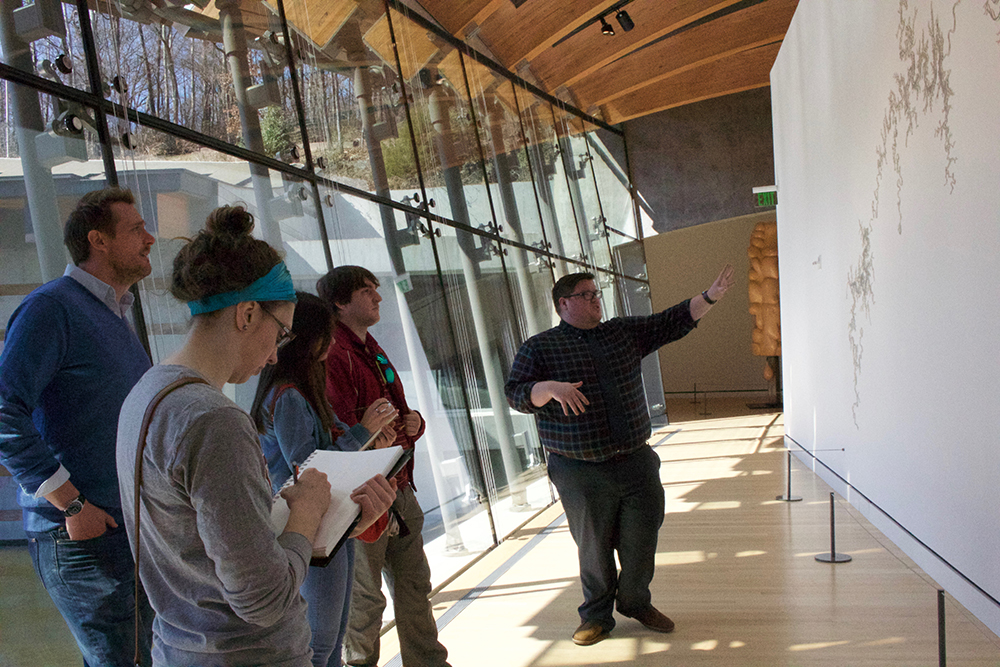
5. Artist Maya Lin, best known for her Vietnam Memorial, created Silver Upper White River (2015) for the museum’s gallery bridge. The recycled silver traces the contours of the upper portion of the White River, a major waterway that runs 722 miles through Arkansas and Missouri. Her sculpture provides an elegant grace note in an area washed in sunlight, which would damage paintings and drawings.
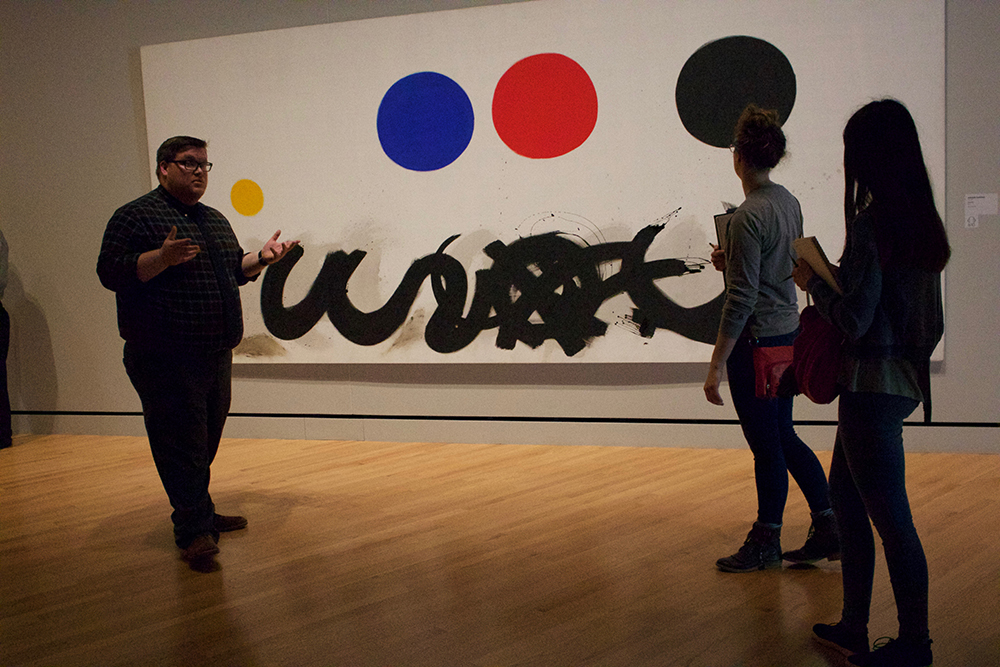
6. Morgan and Polina take in the abstract, calligraphic Trinity (1962) by Adolph Gottlieb, part of his Imaginary Landscapes series.
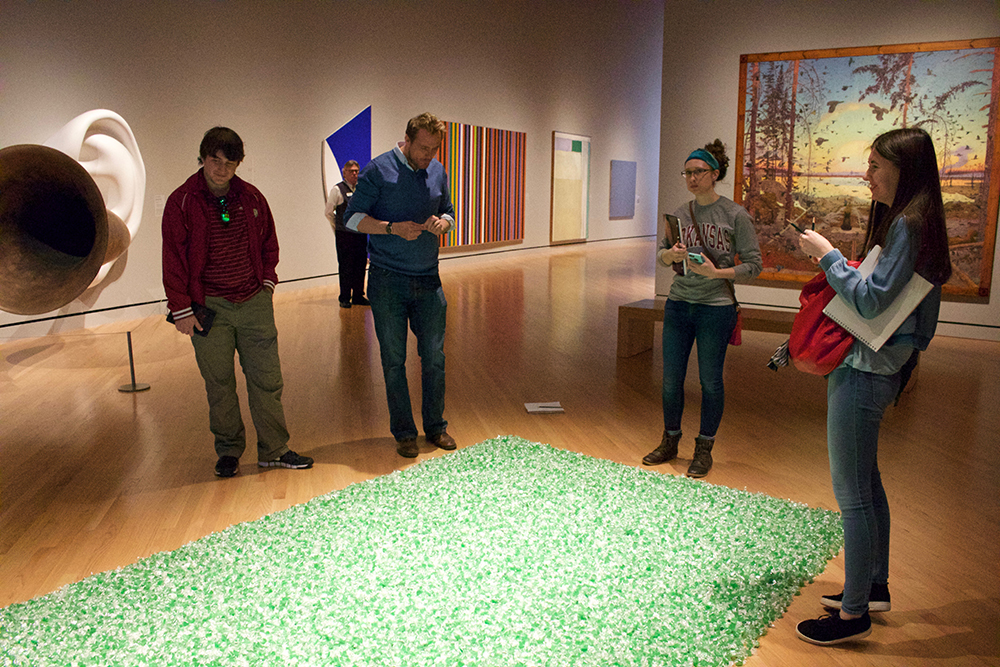
7. The indoor tour concludes with Smith and the students sampling from a consumable carpet of cello-wrapped sour apple candy – Felix Gonzalez-Torres’ “Untitled” (L.A.). “It’s a commodity to enjoy, but taking a piece away degrades it,” Smith points out. “Also, all this plastic! I can’t help but think that the green color of the candy was intentional – it’s a completely artificial landscape.” Polina comments that “modern art is more about the process, like a project in studio. You spend so much time on it. In the end, it may look simple, but there’s so much meaning invested in it.”

8. The group breaks for lunch in Eleven, Crystal Bridges’ restaurant, located in a bridge that spans the spring-fed ponds. The space is punctuated with work by Jeff Koons and this piece by Robert Indiana, The Electric EAT, 1964/2007.
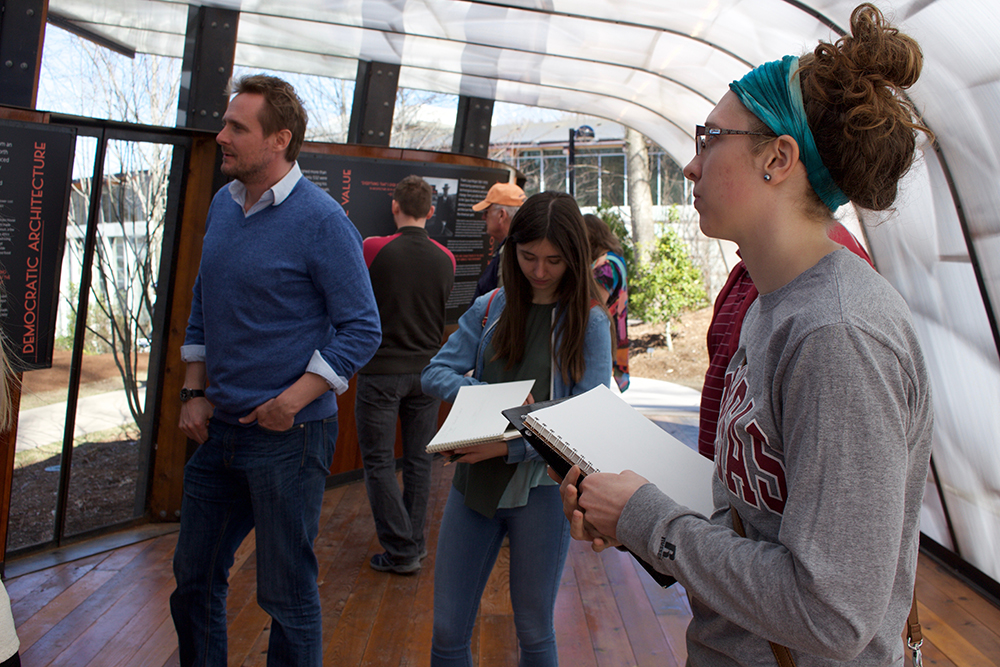
9. Smith and his students visit the interpretive pavilion for the Bachman-Wilson House, the 1,800-square-foot home designed by Frank Lloyd Wright. In 2014 Crystal Bridges bought and relocated the house to the museum grounds from its original site in Millstone, New Jersey, where it was subject to repeated flooding. Students at the UA’s Fay Jones School of Architecture and Design designed and built this interpretive pavilion to welcome visitors to the house.

11. Polina’s sketch of the Bachman-Wilson house. No photos could be taken inside the house, which provides an interesting lesson on how a small space and modest materials (think cinderblock walls) can open up to extraordinary views. If you haven’t been yet, go, to see how good design can be achieved on a slim budget.
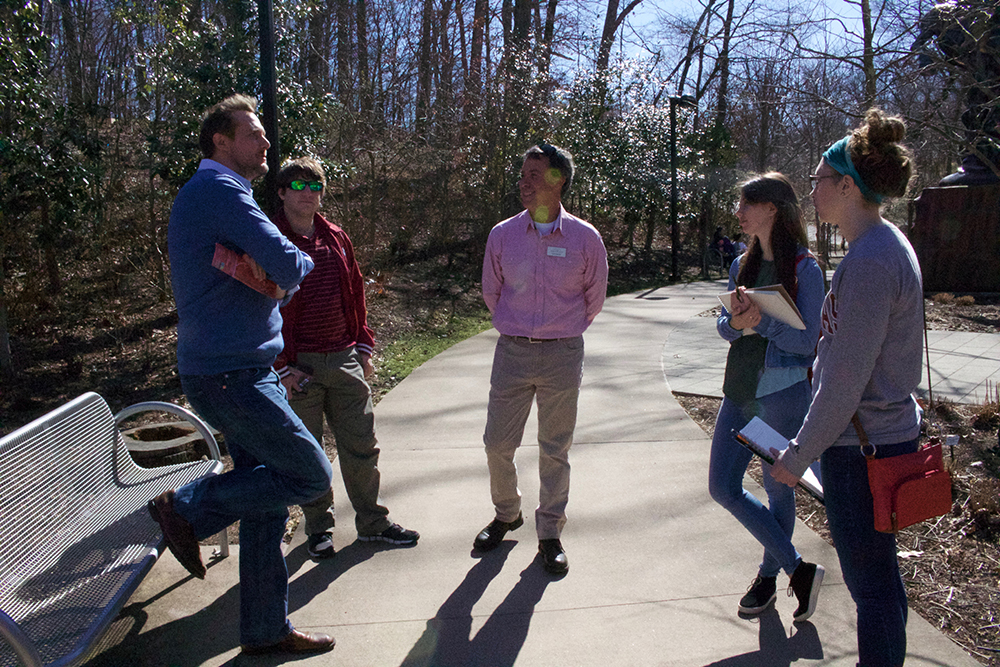
12. Clay Bakker, manager of trails and grounds, helped to shape Crystal Bridges’ 120-acre site and leads the outdoor tour. The museum’s landscape team was charged with using only native plants – a considerable challenge, given that most garden center offerings are 90% non-native cultivars. Discussion centers on the effort to balance conservation (proper use of nature) and preservation (protection of nature from use). “We’re not necessarily a nature preserve –– we’re more of a nature inspiration,” Bakker explains. “We’re not trying to save every bit of the ecosystem. Our goal is to make people conscious of the ecosystem, right here, in town.” Carl Smith emphasizes that the debate dates back to 18th-century England: “Is wilderness acceptable? Landscape is not neutral. People have as much to say about it as the buildings in it, and you have to balance what people want versus the natural landscape.”

